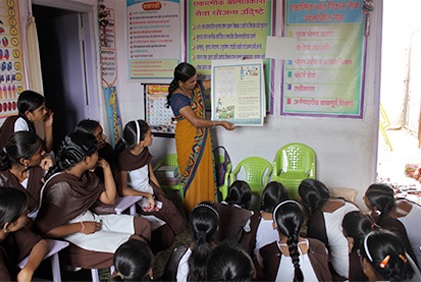
Empowering Adolescent Girls and Preventing Child Marriage through Life Skills Education
Description:
Everyday around 15,600 girls get married in India at a median age of 15 years. IHMP is empowering unmarried adolescent girls through life skills education in villages and urban slums of Maharashtra. IHMP aims to make these girls more self-confident and assertive and support them develop the ability to negotiate a delay in age at marriage, and continue with their education. The institute’s community-based teachers conduct biweekly classes in their villages and slums. The girls learn about several subjects such as, changes in their bodies during adolescence, sexual and reproductive health, nutrition, personal hygiene and first aid, etc. The girls are also taught about gender discrimination and how to deal with it, laws and policies related to adolescent girls and women, local functionaries and administrative bodies and their functions, practical skills in communication, decision making and negotiation.
What we do:
- Life skills education for unmarried adolescent girls aged 11-19 years through community-based teachers – 48 biweekly sessions over 6 months
- Identification of girls with low self-esteem and self-efficacy using a culturally appropriate scale developed by IHMP
- Special counseling to adolescent girls with low self-esteem and self-efficacy including parental counseling
- Formation of Adolescent Girls Clubs (Kishori Mandals) – capacity building of peer leaders to implement community projects
- Behaviour Change Communication (BCC) that involves engaging parents individually and in small groups
Impact created with regard to delaying the age at marriage:
- Proportion of girls getting married before 18 years reduced from 80.7% to 61.8 % after 18 months of intervention
- Girls who never attended life skills education were over 2.5 times more likely to marry before 18 years
- Median age at marriage increased from 16 to 17 years
Impact with regard to improving self-esteem and self-efficacy of the adolescent girls:
- Adolescent girls with poor self-esteem reduced from 9% to 2% after the course
- Girls with high self-esteem increased from 57% to 69%
- Girls with low self-efficacy reduced from 14% to 3% after the course
- Girls with high self-efficacy increased from 48% to 60%
Results are based on testing over 1650 girls for levels of self-esteem and self-efficacy.
